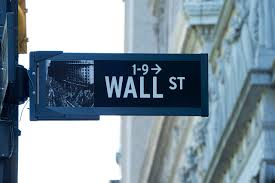By Erik Holm, Wall Street Journal–
Grab your hats.
The Dow Jones Industrial Average just powered through the 20000 level for the first time ever, setting an all-time intraday high three trading days after the inauguration of Donald Trump. Moments after the open, the Dow shot up to 20033.77.
The new record comes as stocks have been on the rise for much of the past three months, finding fresh legs since Election Day to add to one of the longest bull-market runs in U.S. history. The Dow industrials closed under 18000 as recently as Nov. 4, but have risen 12% since then.
The broader S&P 500 and Nasdaq Composite have also set several records since the election, and are both flirting with fresh highs again Friday.
In the price-weighted Dow, the biggest point contributor since the election, by far, has been Goldman Sachs Group Inc. The bank was responsible for 354 points of the Dow’s 1580-point increase through Tuesday. Among the other 29 members of the index, only International Business Machines Corp., Boeing Co., UnitedHealth Group Inc. and J.P. Morgan Chase & Co. contributed more than 100 in that span.
The Dow first closed above 19000 on Nov. 22, meaning the blue-chip index has taken 42 trading sessions to climb to its latest round-number milestone. If the level holds to the close, it will fall short of the record 24 sessions it took for the index to go from 10000 to 11000 in 1999, but beat the current second-fastest 1000-point run, the 59 days it took to go from 13000 to 14000 in 2007.
For a time, it appeared as if the 24-day record would be broken. The Dow touched 19966 intraday on Dec. 14, coming within 34 points of 20000 just 15 trading sessions after hitting 19000. Then, it got within 13 points on Dec. 20. But it backed off its peak in the last two weeks of the year amid some of the lowest trading-volume days of 2016.
The index regained some traction at the start of January, coming within a rounding error of 20000 on Jan. 6, when it hit 19999.63 intraday.
Then stocks languished for two weeks, as investors waited for Mr. Trump to take office and put his plans into action. The Dow fell on eight of the next nine days.
But U.S. stocks have recovered their vigor since last Friday, when Mr. Trump took the oath of office on the steps of the U.S. Capitol and began following through on his agenda. Among his other actions, he withdrew from a major trade deal, lifted some requirements of the Affordable Care Act and boosted hopes of fiscal stimulus by pledging to start construction on a border wall and reviving two controversial oil pipeline projects.
The Dow’s swift crossing of the 20000 mark stands in stark contrast to the nearly two years between its first close at 18000 and its first close at 19000. The nearly 500 trading days it took to achieve that 1,000-point milestone was the seventh-longest stretch of time between such round-number marks.
The 16000, 17000 and 18000 Dow records were all shattered less than 160 trading sessions after the previous 1000-point level was first reached.
Each of those milestones have been hit amid the fourth-longest bull market in the 120-year history of the Dow. Since bottoming at 6547.05 in March 2009, the index has more than tripled.
The longest bull market on record reached its peak 55 years ago last month, with the Dow industrials cresting at 734.91 on Dec. 13, 1961. The bull run began June 14, 1949, and logged a 355% gain over the 12-and-a-half-year span.
Six months later, the Dow would bottom at 535.76, a 27% plunge.


Leave A Comment
You must be logged in to post a comment.